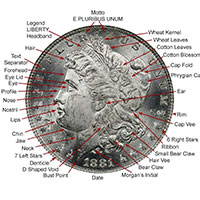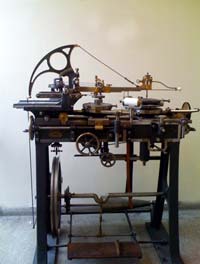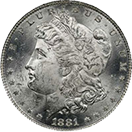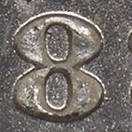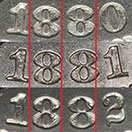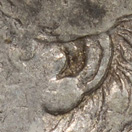Sources
Search
Contact
Home
Influencing the reopening of the New Orleans Mint were a host of politicians, some in Washington and others on the job in New Orleans. Often forgotten is that there was an Assistant Treasurer's operation there. There were big differences in the offices since most if not all in the Assistant Treasurer's Office were political appointees. Also all employees of the Assistant Treasurer's Office were salaried, a benefit not afforded Mint employees.
And not to be left out, there was even an embezzler in the Assistant Treasurer's Office, John Hammond Aufdemorte, who managed to abscond with the modern equivalent of $628,000. There is always more to the story than just minting coins!
William Boyd Allison (1829-1908) was an early leader of the Iowa Republican Party, and represented northeastern Iowa for four consecutive terms in the U. S. House before representing his state for six consecutive terms in the U. S. Senate. During the Civil War he worked for the governor of Iowa and was responsible for raising four regiments of troops for the war.
During his time in the Congress he became a very influential member and eventually headed the powerful Senate Appropriations Committee. He is still the longest serving chairman of the committee. He was twice asked to serve as the Secretary of the Treasury and also offered the job of Secretary of State. He declined these positions preferring to remain in the Senate. He was a Republican, but also a centrist who both parties could work with and turn to when legislation needed compromise.
In 1878 he worked with Representative Richard P. Bland on what became the Bland-Allison Act which opened the door to silver backing of paper money (silver certificates) and the creation of the Morgan Dollar.
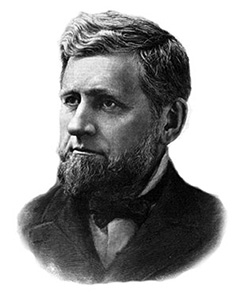
John Herman Aufdemorte is listed as a Porter for the Assistant Treasurer's Office in New Orleans in 1880. He already held that post in 1875 long before the reopening of the Mint, so he was a long term government employee. Even in 1871 he was salaried at $900 annually in the Assistant Treasurer's Office.
He was born in Louisiana in 1848 and in 1881 he was 33. He married Frances Ann Patterson in 1865 when he was only 17 and she was 20. He married again to Susane Mayer, a widow in 1880, Frances Ann died in 1867 at the age of 22.
Now to add to the story of John Aufdemorte he was convicted of embezzlement of funds from the Assistant Treasurer's Office on February 20, 1886. Apparently he stole $25,340, which in today's dollars would be $628,000. Such a great sum of money was probably stolen over a number of years. According to the New York Times, the jury recommended the prisoner to the mercy of the court so apparently they had some feelings about his guilt. It was not his age because at the time he was only 38.
If he spent any time in prison it was brief because he is back in the Federal Census and City Directory in 1890. There must not have been any stigma associated with embezzlement because he never left New Orleans. He died in New Orleans in 1911 at the age of 63.
The Aging 1D
Submissions
Clashed Denticle
Date Issues
Encyclopedia
New Orleans and the Mint in 1881
The Devolving 5
One and Done
Two and Through
Fakes
Die Fingerprints
Pricing
The Devolving 27
New Orleans and The Mint in 1881
The Civil War
Politics
The Economy
Environment
Organization
Personnel
Coinage
The Jobs
Politicians
Nathaniel Sartle Prentice Banks had a political appointment as a General and was instrumental to restoring order to New Orleans after the difficult situation with Benjamin Butler. He served as Governor of Massachusetts, and in the House of Representatives before and after the War. The residents of New Orleans were not going to like any occupying force, but General Banks made the best of a difficult situation.
He was born in Massachusetts in 1816. He married another Massachusetts native, Mary Theodosia Palmer in 1847. She was born in 1819 in Charleston, Massachusetts. They had two daughters and one son. In 1880 he listed his occupation as a U. S. Marshall, so he continued with public service after the war.
He died in 1894 in Waltham, Massachusetts at the age of 78. Mary died in 1901 in Waltham, Massachusetts at the age of 82.
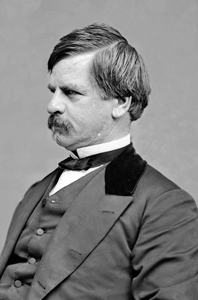
It is difficult to have any discussion about Morgan Dollars without mentioning Charles Edward Barber, the Chief Engraver at the U. S. Mint. He was born in England in 1840 and immigrated to America in 1860. He married Caroline R. Gaston in 1902. She was born in 1862, also in England.
Charles was the son of William Barber, the Chief Engraver at the Mint and succeeded his father as the Chief Engraver in 1879, just in time to continue squabbles with George Morgan and others over coin designs. While he had his personal successes, Morgan Dollar collectors often view his skills as lower than his contemporaries. In addition to conflicts with George Morgan he also tried his best to thwart the efforts of Teddy Roosevelt and Augustus St. Gaudens in the design of the Gold Double Eagle. He was obviously a skilled politician to stand up to Teddy Roosevelt and keep his job.
He died in 1917 at the age of 77 and was succeeded by George T. Morgan.
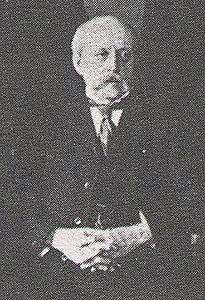
Richard Parks Bland (1835 – 1899) of Missouri, was a politician, lawyer, and educator from Missouri. He served in the United States Congress a total of twenty-four years between 1873 and 1899, representing at various times the Missouri 5th, 8th and 11th congressional districts. He was a Democrat and nicknamed "Silver Dick" for his efforts to promote a United States return to bimetallism and an advocate of the free silver movement.
Bland is best known for the Bland–Allison Act that he co-sponsored with Senator William B. Allison. Passed over the veto of President Rutherford B. Hayes in 1878, the Act required the U. S. Treasury to buy large quantities of silver from western mining interests and put it into circulation as silver dollars.
Bland was a U. S. Presidential candidate in 1896, seeking the Democratic presidential nomination but lost to William Jennings Bryan.
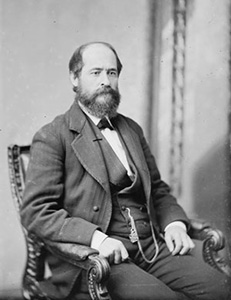
General Benjamin Franklin Butler had the unenviable job of trying to manage New Orleans in the early days after the city surrendered to Union forces. Unfortunately many of his attempts at management made the situation worse and he was replaced by General Nathaniel P. Banks. We believe that the antagonism he created fed much of the violence in later years.
Benjamin Butler was born in 1818 in New Hampshire. After the Civil War he served in the U. S. House of Representatives from 1867 to 1879. He became Governor of Massachusetts in 1883 but served only one term. He was a also a lawyer and developed a reputation as a great criminal defense attorney.
He married Sarah Jones Hildreth of Lowell, Massachusetts in 1844. They eventually had four children, three sons and a daughter. He died in 1893 at the age of 74. Sarah died in 1876 at the age of 59.
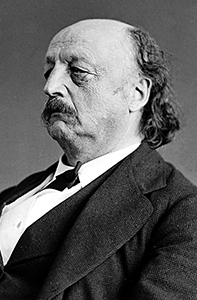
Salmon P. Chase had a storied political career. He was born in 1808 in New Hampshire. He married three times: Katherine Garmiss, Eliza Ann Smith, and Sarah Dunlop Ludlow. He had an unusual political career and at times affiliated with five different parties. Interestingly he was a Republican during the Civil War and then flipped to the Democratic Party post war.
He served in a number of government posts, but is best known for his tenure as the Secretary of the Treasury during Lincoln's Presidency. But he also served as the Governor of Ohio, a U. S. Senator, and finally as the Chief Justice of the Supreme Court from 1864 through 1873. He was nominated to the Supreme Court by Lincoln in 1864, so his knowledge and experience were valued in a wide group of constituents.
He held the distinction of having his portrait on the $10,000 Gold Certificate while it was in use.
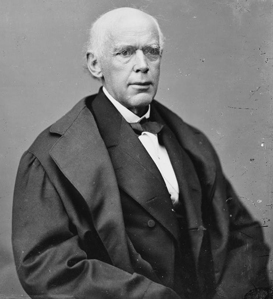
Eustis, James B.
James Biddle Eustis was born in 1834 in Louisiana and served in the Louisiana House of Representatives and Senate during the Reconstruction era. He also served as a U. s. Senator from 1876 to 1891. In 1893 he was appointed to the position of Ambassador to France by Grover Cleveland and held that post for four years.
Eustis was important because he was embroiled in the controversy when the U. S. Senate refused to seat a delegation they felt were Southern sympathizers. He was a representative for Louisiana when the decision to reopen the Mint was made.
He married Ellen Buckner in 1857 in Massachusetts. They went on to have four sons and two daughters. He died in 1899 in New Orleans at the age of 65.
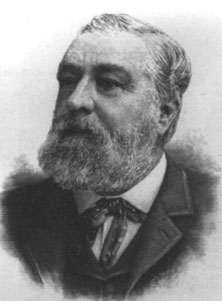
David Glasgow Farragut is best known for his victory at Mobile Bay in the Civil War, it was his leadership that led to the isolation of New Orleans and surrender to the Union in 1862. He effectively took Louisiana out of the war and began to strangle Confederate commerce. His often paraphrased "Damn the torpedoes, full speed ahead" may be his most memorable moment.
But he was also the first Admiral of the Navy and had a long career before the Civil War that went back as far as the War of 1812. He actually joined the Navy as a midshipman at nine years of age. From there he served until his death in 1870, a total service of sixty years.
in 1843.
He was born in Tennessee and married Virginia Dorcas Loyall in 1843. They had no children.
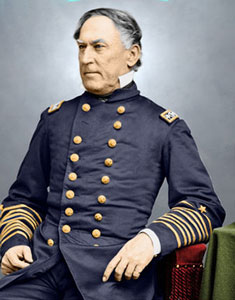
George Faust was already working for the Assistant Treasurer's Office in 1870 as a Watchman and was the lowest paid employee. He was born around 1845 in Germany and in 1880 was still listed as single.
His brother Nicholas Faust worked at the Mint, so nepotism was alive and well even in 1870. In 1879 he was still listed as a Day Watchman at the Assistant Treasurer's Office.
The name George Faust is common among German immigrants and we have not been able to find additional information.
Benjamin Franklin Flanders was the highest ranking Treasury Official in Louisiana in 1880. He was more than well connected and probably had some management experience from his days as a heavy hitting Louisiana politician. He was either elected or appointed during the War to the U. S. House Representative (1862-1863), Mayor of New Orleans (1870-1872), and Governor of Louisiana (1867-1868). So he was definitely a Union sympathizer since these were all either during the War or Reconstruction. His appointment as the Assistant Treasurer had to be some form of payback for backing the Union during the War.
He was born in New Hampshire in 1816 and was 64 in 1880. He married Susan H. Sawyer who was ten years younger. They had at least two daughters and two sons. She was a New York native. He died in Louisiana in 1896 at the age of 80.
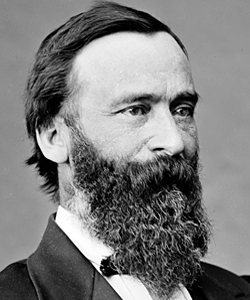
Clement Carroll Flanders was born in New Orleans in 1848. He was the son of Wardnell Clement Flanders and Anna Cunningham. He married Mary Elizabeth Sims and they had five children, three sons and two daughters. Mary passed away in 1884 after giving birth to their last son, Franklin Benjamin Flanders. In 1901 he remarried to Katie Margaret Antoinette Kundert.
He was the nephew of Benjamin F. Flanders, so once again a little nepotism is in the picture. As the Receiving Teller in 1880 he had a good salaried job for his age.
The Assistant Treasurer's Office opened long before the Mint and he is listed as the Receiving Teller as early as 1875. Prior to this job though he was listed as the Cashier at a salary of $2,500 annually. But all salaries were lower in 1875 so he was not demoted.
He died in 1903 at the age of 54.
Henry S. Foote was a well-educated Virginian who had moved west after college. He was an important figure in the Compromise of 1850 that delayed the Civil War. But he is also remembered for drawing a revolver and pointing it at another Senator during the heated debate. He had to be wrestled to the floor and restrained.
At the outbreak of the Civil War he was living in Tennessee and was elected to the First and Second Confederate Congresses. But he also defected to the North in early 1865 and ultimately traveled to Canada and England as a man without a Country. After the War he returned to the United States and lived in Washington. He served as Superintendent of the Mint from 1879 until 1880.
During his career he was apparently very short-tempered and prone to action. He was involved in a number of duels, which he obviously survived.
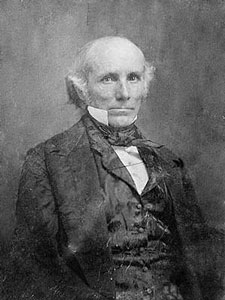
Abraham F. Grundy was born in Louisiana in 1854. In 1881 he was 27 and still single.
He was already working at the Treasurer's Office in 1874 as an Assistant Watchman. In 1878 he was an Assistant Bookkeeper, and in 1879 he listed as a Clerk for the first time. In the 1880 Federal Census he and his wife, Clara, are living in a boarding house.
He died in 1895 in Louisiana at the age of 42.
Hayes, Rutherford B.
When the Mint was reopened in 1879 President Rutherford B. Hayes appointed former U. S. Senator and Mississippi Governor Henry Stewart Foote to be the superintendent of the operation.
Hayes was elected president in 1876 in perhaps the most contested election in history. Following the Civil War votes in the heavily Democratic South were often questioned. In the 1876 election votes in Florida, South Carolina, and Louisiana were questioned and ultimately reversed in favor of Hayes. The election was so contentious that in South Carolina and Louisiana each party temporarily inaugurated its own government.
The Presidential election was eventually decided by a committee and Hayes became the 19th President. The importance of the election was that the compromise over the election ended the Reconstruction Era in the South following the Civil War. This eventually led to the reopening of the New Orleans Mint.
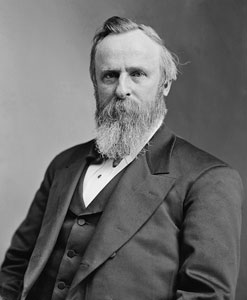
Alexander W. Hodge was born in Virginia in 1805. He had to be the oldest employee in the Assistant Treasurer's Office at 76. He was listed as a IRS employee as early as 1861, so he was a long term employee when representing the U. S. Government might not have been an easy position.
Alex must have been quite a character. In 1880 he is listed in the Federal Census with is wife Mary Marvin who is 54. Remember he was 75. They are raising either a daughter or granddaughter who is 9. His first marriage was to Anna Maria Forbes and they had four sons and three daughters. Anna Maria died in 1851.
He died in Louisiana in 1887 at the age of 82.
Linderman, Henry Richard
Henry Richard Linderman was a doctor who practiced medicine in both Pennsylvania and New York. He studied under his father and also completed medical courses in New York City.
From 1855 until 1864 he was the chief clerk of the Philadelphia Mint. He left the mint for a year but returned in 1866 as the director of the Philadelphia Mint. He served as the director until 1869. He later served in other Mint capacities until 1873 when he was appointed Superintendent of the Mint. In that capacity he had control over all Mint activities and was an advocate for the gold standard.
As the Superintendent of the US Mint and made the decision to ask the Royal Mint to recommend an engraver who could improve the coinage of the United States. It was his actions that led to the immigration of George T. Morgan, the designer and engraver of the Morgan Dollar.
Linderman died in 1879, the year after the first Morgan Dollars were struck.
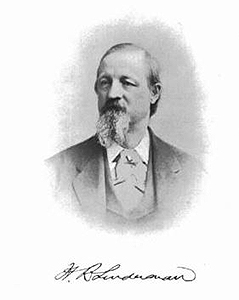
William Linn McMillen was born in Ohio, and graduated from medical school in 1852 During the Civil War, he served as a surgeon with the 1st Ohio Volunteers, and then as Surgeon General of the State of Ohio. He enlisted in the 95th Ohio Volunteer Infantry Regiment serving as colonel. He was wounded in 1862, in the Battle of Richmond where he was accused of cowardly conduct during that engagement and was court-martialed, tried and acquitted after his release. He led his brigade at the Battle of Nashville. After the Confederate General Thomas Benton Smith surrendered and had been disarmed, McMillen reportedly berated the disarmed prisoner and then attacked General Smith with Smith's own sword causing irreparable brain damage. McMillen was brevetted as a brigadier general in 1865.
He moved to Louisiana in 1866 and served as a member of the 1868 Constitutional Convention, and later as a state senator. In 1872 and 1873 he was elected as a U. S. Senator, but was not admitted to that seat. He served as postmaster of New Orleans under Rutherford B. Hayes, and as Surveyor of the Port of New Orleans under Benjamin Harrison.
He married Elizabeth I. King Neil, of Columbus, Ohio in 1861. Upon his retirement, he returned to Ohio; he died and was buried in Columbus.
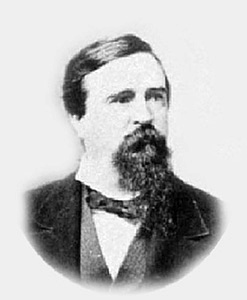
George T. Morgan came to the United States from England at the request of Mint Director H. R. Linderman and on recommendation of Charles Fremantle the director of the London Mint. Director Linderman felt that additional expertise was needed in the engraving area and was somewhat dissatisfied with the work of William and Charles Barber.
George Morgan proved to be as good as his recommendation and continued to work at the Mint for the rest of his life. There was a lot of friction between the Barbers and Morgan and this conflict reared its head from time to time.
George Morgan became the chief engraver after the death of Charles Barber in 1917. Under his direction many high quality coins and medals were struck, but he is most remembered for the Morgan Dollar.
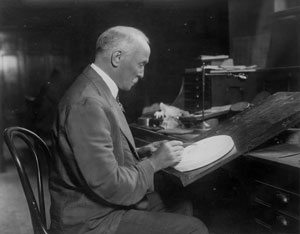
Born in Ireland, James Scott held one of the lowest paid jobs at the Assistant Treasurer's Office. Apparently the Watchman's job was valued least since both the day and night watchmen were paid the same.
He is listed as early as 1877 in the Federal Register, but as a Janitor making $400 annually. His name is too common to trace other facts.
Smythe, Andrew Woods
Dr. Andrew Woods Smyth served as the director of the New Orleans Mint starting in 1885. Dr. Smyth was a noted physician and surgeon, but there is no record of having any experience to manage the Mint.
He was born in Ireland in 1833, where he received his preliminary education before emigrating to the United States in 1849. He began the study of medicine in New Orleans, and graduated from the medical department of the University of Louisiana 1859. He earned a reputation for skill as a surgeon and became house surgeon of one of the great charity institutions of that city. There he made many famous and successful surgical operations and earned a reputation as one of the most skilled surgeons in the world.
After a successful career in America he returned to his native Ireland in 1894 and died there.
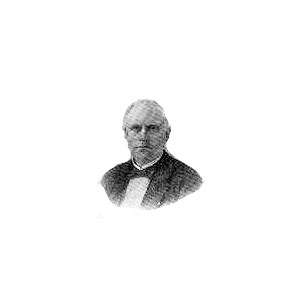
Born in New Orleans in 1849 and was 32 in 1881. He was living with his older brother Joseph and family in the 1880 Federal Census. After the census was taken he married Carrie Bell Orr late in 1880. She was eleven years younger and also born in Louisiana in 1859. In neither the 1900 nor the 1910 Federal Census are any children listed so we would assume that they had none.
The Cashier job was an important one as is reflected in his salary.
She died in 1913 at the age of 53, and he died in 1919 in New Orleans at the age of 70.
Getting Started
Collecting The 1881-O
The 1881-O VAMs



